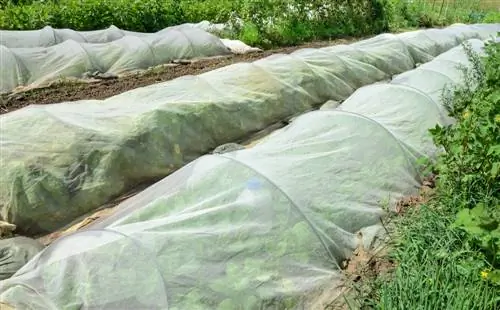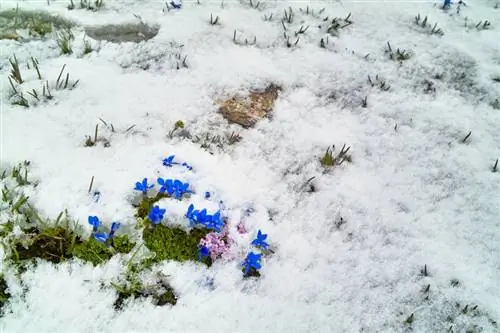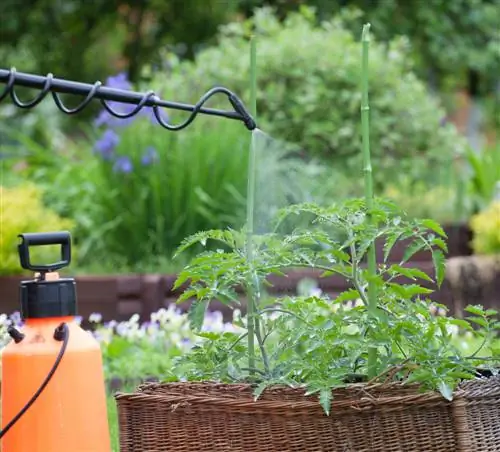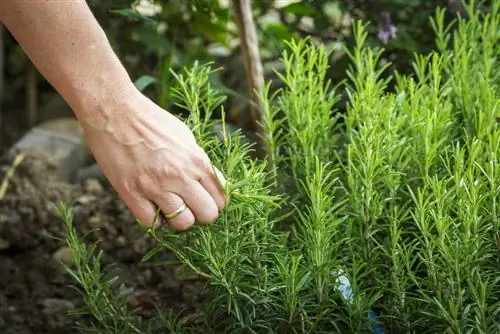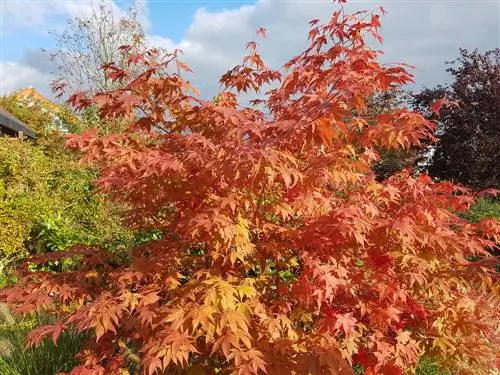- Author admin [email protected].
- Public 2023-12-16 16:46.
- Last modified 2025-01-23 11:22.
It can get really hot again in August. Nature also suffers from strong sunlight. The intense UV light can cause serious damage such as local death of plant tissue and crop failure.
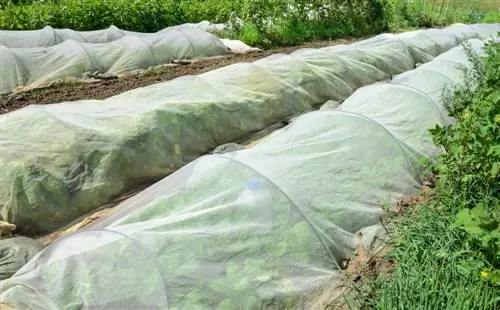
How can you avoid heat damage to plants?
To prevent heat damage to plants, you should place potted plants in the shade, provide sufficient shading, use bird protection nets or fleeces, also protect vegetable plants and water them in the early morning or evening hours.
Detecting heat damage
| Art | malicious image |
|---|---|
| Ornamental plants | Water drops concentrate the sun's light rays and act like small magnifying glasses. This is particularly a problem for plant leaves with fine hairs, which quickly get sunburnt. This leaf damage is irreversible. |
| Vegetables | Heads of lettuce exposed to the sun show burns that extend into the interior due to direct sunlight. Celery gets leaf necrosis, cucumbers get white, very limited spots. The cauliflower will become inedible and brown if the flower is not protected from UVV radiation. |
| Fruit | Intense sunlight initially causes light, then brown spots to form on apples. This damage often continues into the pulp. In connection with a lack of water, the leaves turn yellow and drop prematurely. As a result, the fruits remaining on the tree no longer develop any further. |
| Berries | These wither, become soft and shriveled. Dark berries warm up with heat as if they were being cooked. As a result, they fall off and are inedible. |
These measures help
- Place potted plants in the shade on hot days or provide sufficient shading, for example with an awning (€16.00 on Amazon).
- Bird protection nets and fleeces not only protect berry bushes and fruit trees from having to share the harvest with your feathered friends. The nets also provide some shade.
- Vegetable plants should also be protected from heat and direct sunlight by fleeces or nets.
- Water in the early morning or evening. Water regularly, on very warm days this may even be necessary twice a day. This is how you protect the plants from additional stress caused by a lack of water.
Tip
Gently acclimate plants that have overwintered indoors to sunlight in spring. Place potted plants in a shady place and initially only expose them to morning or evening sun.

